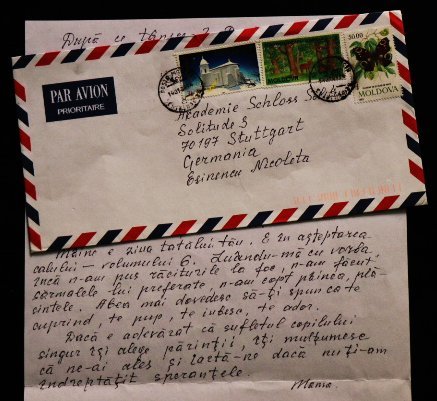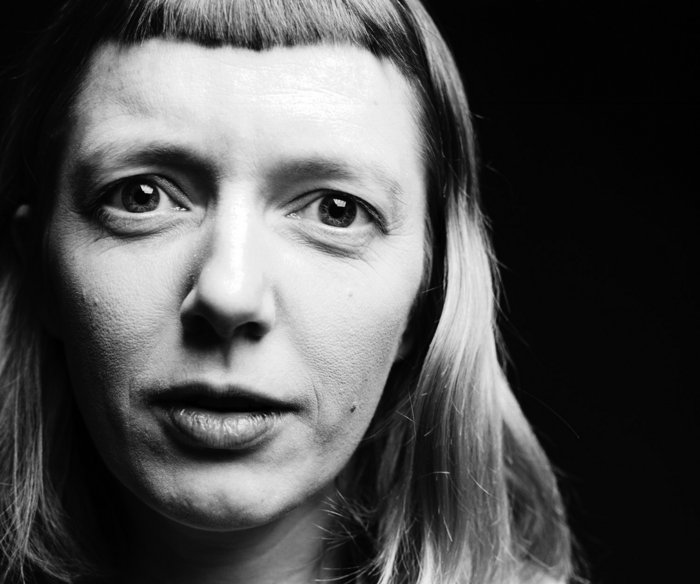After the fall of the Soviet Union, family structures in the Republic of Moldova were faced with great economic challenges and at the same time were restyled into a traditional Christian asset. Nicoleta Esinencu links these circumstances with the experience of losing her parents, examining the term family in the 21st century. This is an excerpt from her mother’s letters to her.
Nica!
A long time ago, a mirror broke in my parent’s house. My mother said, “A misfortune awaits us”. And it happened: my father, your grandpa, went to prison. Unfortunately, drunkenness brought him there. Since then I’ve been afraid of drinking and of mirrors. If I happened to touch one, the first thought that would cross my mind was to make sure to not break it.
One day, your dad (he would never unlock the door himself) came home late, as he usually did, and rang the doorbell. I was woken up by the shrill, uninterrupted sound of the buzzer. Half asleep and scared, I couldn’t find the bedroom door.
When I turned around, the mirror had broken into pieces.
That’s how the ordeal began. It took me many years to find God, begging him to forgive my sins.
Nica, despair comes later. First, you rebel, then you cry. Then you smoke a cigarette. Then you think of God and get yourself a Bible.
Then again you stumble upon a hidden syringe. You shudder. You run to God again. You beg him. You cry. You recall all your sins. You go to church. You confess. You repent in prayer. You take communion hoping that God will forgive you.
You begin to reproach yourself that you didn’t raise him well. Because you didn’t take into account... because you were too good, because you were too bad... because you didn’t buy him a guitar...
You recall that you sent him to the painting school, you sent him to the swimming school, you sent him to the dance courses, you read him books, you took him to school, you took him to the theatre, you served him food on the tray in bed.
You realize in horror that you didn’t read to him from the Bible. You start reading it on the same evening.
You search, search, search for answers in books... you get yourself accommodated with different theories.
You’re afraid to pry in your daughter’s life. You regret that you haven‘t created conditions for her.
You can’t sleep at night.
You say “Our Father” 33 times. You realize that you’re alone. That no one needs you. You want to go somewhere out there. But you can’t go anywhere. You have no money, no childhood home, no friends. You leave the house. You stay a couple of days at the train station. You shave your hair in protest. You make a decision: to never speak again until the end of your life. You return home. You cry on your daughter’s shoulder. Your grandson calls and asks you, “Grandma, can you make polenta today?” You must answer him. You wipe off your tears.
At night, you talk to God. You pray for your husband, sons, daughter, daughters-in-law, grandchildren. You think that if it takes so little to ensure their wellbeing, then you have no right to not do it.
Mama, 24.01.2004
Translation from Romanian by Artiom Zavadovsky

